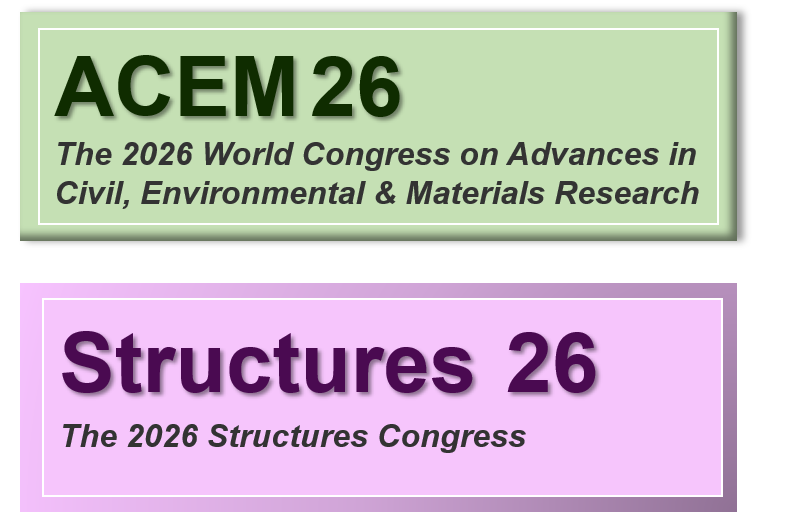
| |
| CONTENTS | |
| Volume 3, Number 1, April 2014 |
|
- Analysis of a three-dimensional FEM model of a thin piezoelectric actuator embedded in an infinite host structure Xiaohu Zeng, ZhufengYue, Bin Zhao and S.F.Wen
|
| ||
| Abstract; Full Text (1860K) . | pages 001-21. | DOI: 10.12989/amr.2014.3.1.001 |
Abstract
In this paper, we adopted a two-dimensional analytical electro-elastic model to predict the stress distributions of the piezoelectric actuator in 3D case. The actuator was embedded in an elastic host structure under electrical loadings. The problem is reduced to the solution of singular integral equations of the first kind. The interfacial stresses and the axial normal stress in both plane stress state and plane strain state were obtained to study the actuation effects being transferred from the actuator to the host. The stress distributions of the PZT actuator in different length and different thickness were analyzed to guarantee the generality. The validity of the present model has been demonstrated by application of specific examples and comparisons with the corresponding results obtained from the Finite Element Method.
Key Words
piezoelectric actuator; the 3D FEM model; actuation effect; stress distribution
Address
Xiaohu Zeng, ZhufengYue, Bin Zhao and S.F.Wen: School of Mechanics and Civil engineering & Architecture, Northwestern Polytechnical University,Xi
- Preparation and characterization of boron-nitrogen coordination phenol resin/SiO2 nanocomposites J.G. Gao, D. Zhai and W.H. Wu
|
| ||
| Abstract; Full Text (989K) . | pages 023-33. | DOI: 10.12989/amr.2014.3.1.023 |
Abstract
The boron-nitrogen-containing phenol-formaldehyde resin (BNPFR)/SiO2 nanocomposites (BNPFR/SiO2) were synthesized in-situ, and structure of BNPFR/SiO2 nanocomposites was characterized by FTIR, XRD and TEM. The loss modulus peak temperature Tp of BNPFR/SiO2 nanocomposites cured with different nano-SiO2 content are determined by torsional braid analysis (TBA). The thermal degradation kinetics was investigated by thermogravimetric analysis (TGA). The results show that nano-SiO2 particulate with about 50 nm diameter has a more uniformly distribution in the samples. The loss modulus peak temperature Tp of BNPFR/SiO2 nanocomposite is 214 oC when nano-SiO2 content is 6 wt%. The start thermal degradation temperature Tdi is higher about 30 oC than pure BNPFR. The residual rate (%) of nanocomposites at 800 oC is above 40 % when nano-SiO2 content is 9 %. The thermal degradation process is multistage decomposition and following first order.
Key Words
boron-nitrogen-coordination; phenol-formaldehyde resin; nanocomposites; nano-SiO2; thermal analysis
Address
J.G. Gao, D. Zhai and W.H. Wu: College of Chemistry & Environment Science, Hebei University, Baoding 071002, P. R. China
- Effect of cavity-defects Interaction on the mechanical behavior of the bone cement Leila Zouambi, Boualem Serier and Nabil Benamara
|
| ||
| Abstract; Full Text (664K) . | pages 035-45. | DOI: 10.12989/amr.2014.3.1.035 |
Abstract
The presence of cavities in the bone cement has a great importance for the transport of antibiotics, but its existence in this material can lead to its weakening by notch effect. The aim of this study allows providing a physical interpretation to the cavities interconnection by cracks observed experimentally. The most important stress of Von Mises is localized at the cement/bone interface near the free edge which is the seat of stress concentration. The presence and interaction of cavities in this site concentrate, by notch effect, stresses which tend to the tensile fracture stress of Bone cement.
Key Words
bone cement (PMMA); porosity; interaction; stress concentration
Address
Leila Zouambi and Boualem Serier: LMPM, Mechanical Engineering Department, University of Sidi Bel Abbes, Sidi Bel Abbes 22000, Algeria
Nabil Benamara: LMSR, Mechanical Engineering Department, University of Sidi Bel Abbes, Sidi Bel Abbes 22000, Algeria
- The microstructure and mechanical performance of high strength alloy steel X2M K. Manigandan, T.S. Srivatsan, A.M. Freborg, T. Quick and S. Sastry
|
| ||
| Abstract; Full Text (1647K) . | pages 047-59. | DOI: 10.12989/amr.2014.3.1.283 |
Abstract
In this paper, the microstructure, hardness, tensile deformation and fracture behavior of high strength alloy steel X2M is presented anddiscussed. The influence of both composition and processing on microstructure of the as-provided material and resultant influence of microstructure, as a function of orientation, on hardness, tensile properties and final fracture behavior is highlighted. The macroscopic mode and intrinsic microscopic features that result from fracture of the steel specimens machined from the two orientations, longitudinal and transverse is discussed. The intrinsic microscopic mechanisms governing quasi-static deformation and final fracture behavior of this high strength steel are outlined in light of the effects oftest specimen orientation, intrinsic microstructural effects and nature of loading.
Key Words
composition; processing (carburization); orientation; microstructure; hardness; tensile properties and fracture behavior
Address
K. Manigandan, T.S. Srivatsan and S. Sastry: Department of Mechanical Engineering, The University of Akron, Akron, Ohio 44325
A.M. Freborg: Department of Geology, The University of Akron, Akron, Ohio 44325
T. Quick: Deformation Control Technology, Inc. 7261 Engle Rd., Suite 105 Cleveland, OH 44130

